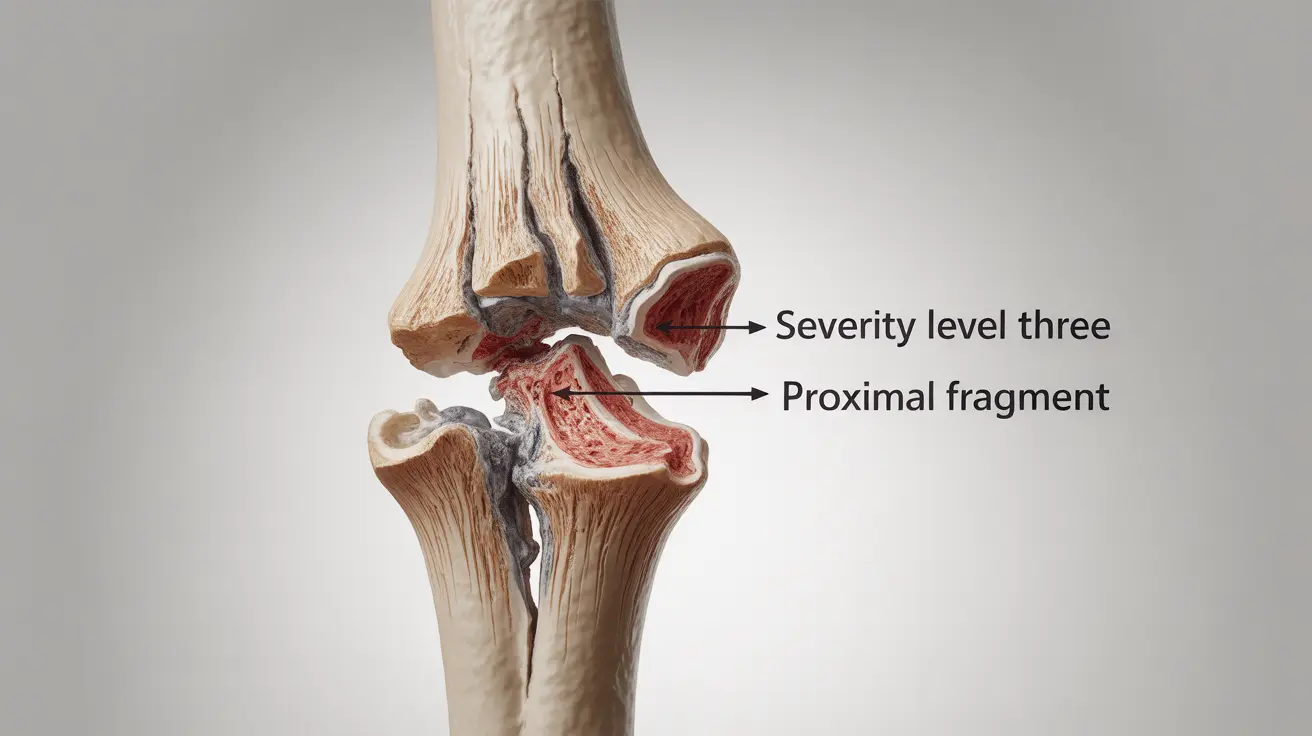A comminuted fracture occurs when a bone breaks or shatters into three or more pieces, often resulting from high-impact trauma or severe injuries. This type of fracture requires immediate medical attention and typically involves a more complex treatment approach compared to simple fractures. Understanding the nature of comminuted fractures, their treatment options, and recovery process is crucial for anyone affected by this serious injury.
What Defines a Comminuted Fracture?
A comminuted fracture is characterized by multiple bone fragments at the fracture site. These injuries commonly occur in long bones like the femur, tibia, or humerus, but can affect any bone in the body. The severity and complexity of the fracture pattern often determine the treatment approach and recovery timeline.
Common Causes and Risk Factors
These severe fractures typically result from:
- High-energy impacts like car accidents
- Falls from significant heights
- Sports-related injuries
- Crushing injuries
- Direct severe trauma to the bone
Certain factors can increase the risk of experiencing a comminuted fracture, including:
- Osteoporosis or decreased bone density
- Advanced age
- Certain medical conditions affecting bone strength
- Vitamin D deficiency
- Long-term use of certain medications
Identifying Symptoms and Diagnosis
The symptoms of a comminuted fracture are often severe and immediate:
- Intense pain at the injury site
- Visible deformity or unusual angle of the affected area
- Swelling and bruising
- Inability to bear weight or move the affected body part
- Possible protrusion of bone through the skin in open fractures
Diagnostic Process
Healthcare providers typically use several methods to confirm and assess a comminuted fracture:
- X-rays to visualize the bone fragments
- CT scans for detailed imaging of complex fractures
- MRI scans in cases involving joint surfaces or soft tissue damage
- Physical examination to assess neurovascular status
Treatment Approaches
Treatment for comminuted fractures often requires a comprehensive approach:
Non-surgical Treatment
In some cases, non-surgical treatment may be appropriate:
- Immobilization using casts or braces
- Protected weight-bearing
- Pain management
- Regular monitoring of healing progress
Surgical Intervention
Many comminuted fractures require surgery:
- Internal fixation with plates and screws
- Intramedullary nailing
- External fixation devices
- Bone grafting when necessary
Recovery and Rehabilitation
Recovery from a comminuted fracture involves several phases:
- Initial healing phase (6-8 weeks)
- Progressive physical therapy
- Gradual return to activities
- Long-term strengthening exercises
The total recovery time typically ranges from several months to a year, depending on factors such as:
- Fracture severity
- Patient age and overall health
- Compliance with treatment protocols
- Presence of complications
Frequently Asked Questions
What are the main symptoms of a comminuted fracture and how do I know if I have one?
The main symptoms include severe pain, visible deformity, swelling, and inability to use the affected body part. Due to the multiple bone fragments involved, these fractures typically cause more intense pain than simple fractures. Only medical imaging can confirm the diagnosis, so immediate medical attention is essential.
How is a comminuted fracture treated, and is surgery always required?
While many comminuted fractures require surgical intervention to properly align and stabilize the bone fragments, not all cases need surgery. The treatment approach depends on factors such as fracture location, severity, and patient characteristics. Non-surgical treatment may be possible for some cases using casting or bracing.
How long does it take to recover from a comminuted fracture, and what can I expect during the healing process?
Recovery typically takes 3-12 months, depending on the fracture's severity and location. The healing process involves initial bone union, followed by progressive rehabilitation and strength building. Patients can expect regular medical follow-up, physical therapy, and gradual return to normal activities.
What can I do to prevent complications and support my recovery after a comminuted fracture?
To support recovery, follow medical instructions carefully, attend all physical therapy sessions, maintain good nutrition, avoid smoking, and gradually increase activity as directed. Watch for signs of complications such as increased pain, fever, or numbness in the affected area.
Could weaker bones or medical conditions increase my risk of a comminuted fracture, even from minor injuries?
Yes, conditions like osteoporosis, bone cancer, certain metabolic disorders, and long-term corticosteroid use can weaken bones, making them more susceptible to comminuted fractures, even from relatively minor trauma. Regular bone density screening and appropriate medical management of these conditions can help reduce risk.




